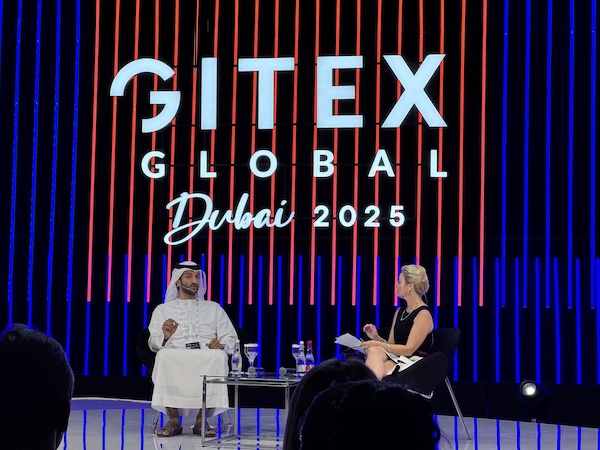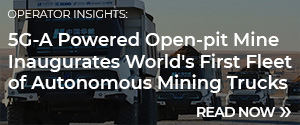Huawei has launched a three-step "ACT" pathway to enable intelligent transformation for enterprises, with the aim of helping them harness the power of AI, as well as nine new industrial intelligence solutions developed with Huawei’s partners.
The ACT pathway – which stands for “Assess high-value scenarios; Calibrate AI models using vertical data; and Transform business operations with scaled AI agents” – was unveiled by Leo Chen (pictured), Huawei's Senior Vice President and President of Enterprise Sales, during a keynote speech at last week’s Huawei Connect 2025 event in Shanghai.
From Huawei’s perspective, the ACT pathway was created in response to the rapid rise of AI over the past few years, which has left enterprises scrambling to figure out what AI means for their own business, and where to start.
“AI is advancing faster than ever, and the benefits are clear,” Chen said. “No one is asking why we should use AI. The real question is how.”
More specifically, he explained, the three key questions raised by enterprises about AI are: (1) How can they ensure their AI investments generate real business value? (2) How can they use their own data to defend their competitive advantages? And (3) How can they help AI use cases move beyond pilots to large-scale application?
Experiences from success stories
To answer those questions, Chen cited several instructive case studies of Huawei’s collaboration with partners, starting with a dynamic master–sub-agent architecture for the banking industry that helped one of its customers accelerate AI application for scenarios like interactions, transactions, and risk control.
Chen also highlighted a case where China Southern Power Grid used Huawei's Ascend computing platform and MindSpore AI framework to develop a large model named "MegaWatt” that runs on an Ascend MoE Expert Parallelism cluster and combines computer vision and natural language processing to improve defect and risk identification efficiency during intelligent power line inspections.
Then there’s Runda Medical’s use of Huawei's Ascend inference servers to develop an AI medical record appliance solution that improves both the quality and efficiency of medical recordkeeping at West China Hospital.
From these three specific examples and other intelligent transformation projects, Chen said that Huawei discovered five key findings:
- Choosing the right scenarios for implementation is critical to successful transformation. The value of AI lies in its ability to transform processes and promote intelligent product and service delivery when deeply integrated with core production scenarios
- The capabilities of industry-specific models depend on high-quality vertical data. To make the most of AI, we need to fine-tune models on high-quality enterprise data.
- Demand for large-scale inference will continue to grow fast alongside AI agents, fueling demand for large-scale inference
- Human-AI collaboration is becoming a new organizational paradigm
- Fifth, systematic governance and risk management are becoming more critical than ever, driving many organizations to pursue more effective governance to ensure secure, sustainable and trustworthy AI.
Huawei’s ACT pathway
Chen said the newly launched three-step ACT pathway is designed to promote AI adoption across industries whilst taking these findings into account
For the first step (“Assess high-value scenarios”), Huawei assesses high-value scenarios using its AI Scenario Assessment Framework to evaluate business value, scenario maturity, and business–technology integration.
“This framework has already helped customers identify more than 1,000 core production scenarios for AI adoption,” Chen said.
The second step (“Calibrate AI models using vertical data”) involves Huawei’s full toolchain and AI security protection system to help enterprises calibrate general models and create industry-specific models. The toolchain uses vertical data to transform raw enterprise data into knowledge, and knowledge into models.
For the third step, (“Transform business operations with scaled AI agents”), Huawei has a one-stop Versatile platform that can generate agents automatically, as well as workflows with more than 100 steps. “This makes agent deployment much faster,” said Chen.
Chen said that Huawei has also developed an AI talent enablement program that helps business professionals effectively develop, deploy and operate AI agents. “As we move toward more human-AI collaboration, enabling people is just as important,” he said.
AI-oriented ICT infrastructure
For enterprises keen to follow the ACT pathway, they’ll need AI-oriented ICT infrastructure that covers the entire process, from data preparation and movement, to model training, inference and development.
As it happens, Huawei has pretty much everything they need to establish that infrastructure as it continues to innovate in areas like data storage, computing, and networks. Chen added that Huawei is also working on creating integrated products that make that process easier, such as its AI storage and Unified Cache Manager plugins, 800GE high-speed data centre network solutions and StarryLink optical modules.
Partner ecosystem response to AI’s impact
Chen credited Huawei’s ecosystem of partners – which to date includes over 6,300 Kunpeng partners, 2,700 Ascend partners, 70 consulting firms, and 750 ISVs – with helping to develop its industry intelligence solutions via several key initiatives, including opening up of Huawei’s software, hardware, and systems; enablement platforms and tools for its partners; and rapid replication of successful practices through industry experience sharing.
On that note, Chen wrapped up by unveiling nine industrial intelligence solutions developed in collaboration with partners for specific industrial scenarios: City AI Center & Foundation Model; Intelligent Computing Labs; Medical Technology Digital and Intelligence 2.0; Banking AI and Foundation Model; Intelligent Manufacturing R&D; SMART Logistics & Warehousing; Intelligent Distribution; Intelligent Exploration and Development for Oil and Gas; and Steel Blast Furnace Temperature Prediction.
Chen concluded by pointing out that AI is changing the world around us. “Our collective response to the changes brought by AI will determine whether it can truly deliver its ‘last mile’ value, and transform technology breakthroughs into real-world benefits. In this sense, every one of us will serve as both a pathfinder and a torchbearer.”


































